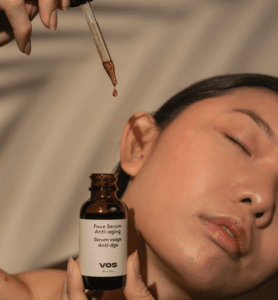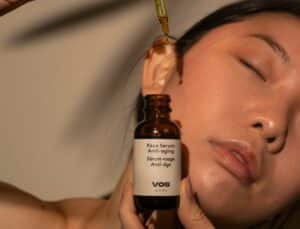Maintaining healthy skin is a daily commitment, and with so many skincare products available, it’s important to understand what makes each one effective. Among these, face serums have become essential for targeted skin concerns and long-term care. This article explores why face serum is a must-have in your skincare routine today, focusing on how serums function, their benefits, and how to use them effectively.
What Is a Face Serum?
Face serums are lightweight, concentrated skincare products designed to deliver active ingredients directly to the skin. Unlike moisturizers or cleansers, serums typically contain fewer filler ingredients, which allows a higher concentration of functional ingredients such as hyaluronic acid, vitamin C, niacinamide, and peptides.
Because serums have a smaller molecular structure, they can penetrate deeper layers of the skin. This allows them to work more effectively on concerns such as uneven texture, dullness, fine lines, and dehydration.
How Face Serums Work in a Skincare Routine
Serums are not a replacement for cleansers or moisturizers. Instead, they are applied between these steps. The typical order is:
- Cleanser
- Toner (if used)
- Face Serum
- Moisturizer
- Sunscreen (morning) or overnight cream (evening)
Serums are meant to target specific skin issues and enhance the overall routine, not to act as a standalone product.

Key Ingredients Commonly Found in Face Serums
The effectiveness of a serum depends on its formulation. Here are some common active ingredients and what they help address:
- Hyaluronic Acid: Helps retain moisture and improve skin hydration.
- Vitamin C: Aids in brightening the skin and protecting against environmental stress.
- Niacinamide: Useful for calming the skin, reducing redness, and regulating oil.
- Peptides: Encourage collagen production and help maintain skin firmness.
- Retinol: Targets signs of aging and improves cell turnover.
Selecting a serum with the right ingredients for your skin concerns is crucial for seeing noticeable improvements.
Why Face Serum Is a Must-Have in Your Skincare Routine Today
High Concentration of Active Ingredients
Most moisturizers contain small amounts of active compounds diluted with emollients and thickeners. In contrast, face serums are made to deliver a more focused dose. This makes them effective even with small quantities, which is why only a few drops are typically needed during application.
Targets Specific Skin Issues
Face serums are formulated to address defined concerns. Whether the issue is hyperpigmentation, dullness, or early signs of aging, there is likely a serum designed to help with it. A good serum becomes a functional part of a routine when selected based on these needs.
Enhances the Benefits of Other Products
Serums can improve the performance of your overall skincare regimen. When used before a moisturizer, a serum helps draw moisture into the skin and supports better absorption of emollients that follow. For example, a hyaluronic acid serum will help keep the skin hydrated and improve the efficacy of your moisturizer.
Suitable for Different Skin Types
Modern formulations of face serums cater to a wide range of skin types. For example:
- Dry Skin: Serums with ceramides and hyaluronic acid help retain moisture.
- Oily or Acne-Prone Skin: Lightweight serums with niacinamide or salicylic acid can control excess oil and calm irritation.
- Sensitive Skin: Gentle serums with panthenol or centella asiatica help reduce redness and inflammation.

By choosing a serum appropriate for your skin type, you can address specific conditions without causing irritation or imbalance.
How to Use Face Serums Correctly
Apply to Clean Skin
Always start with a clean face to avoid trapping impurities beneath the surface. Pat your skin dry before applying serum unless it’s specifically designed for damp application (such as hyaluronic acid).
Use a Small Amount
Most serums are concentrated, so a few drops are enough. Use clean fingertips to press the serum gently into the skin instead of rubbing it in.
Wait Before Layering
Allow the serum to absorb for 30 seconds to a minute before applying a moisturizer. This gives the active ingredients time to penetrate the skin properly.
How to Choose the Right Face Serum
Identify Your Skin Concerns
Start by observing your skin over several days. Do you notice dryness, redness, dark spots, or uneven texture? These observations will guide your ingredient selection.
Read the Ingredient List
Avoid products with added fragrance or alcohol if your skin is sensitive. Look for serums that list their active ingredients within the first five components.
Perform a Patch Test
Before applying any new serum to your entire face, test a small amount on your forearm or behind your ear. Wait 24 hours to check for reactions.
Adding Serum to a Morning vs Evening Routine
Some serums are better suited to morning routines, while others are more appropriate for nighttime use.
- Morning Use: Serums with vitamin C and antioxidants help protect against sun damage and pollution.
- Evening Use: Retinol-based serums or those with peptides support skin renewal while you sleep.
Using a combination of serums at different times of day can provide continuous benefits.
Long-Term Benefits of Face Serums
Regular use of a serum, especially one suited to your skin type and concern, can lead to:
- Improved skin texture
- Reduction in the appearance of fine lines
- Brighter, more even tone
- Reduced inflammation or breakouts
- Increased hydration and elasticity
These improvements are cumulative. With consistent use, a face serum can support healthier skin over time.
Final Thoughts
Understanding why face serum is a must-have in your skincare routine today comes down to its ability to deliver active ingredients effectively and target concerns with precision. A well-chosen serum enhances the performance of your routine and provides long-term skin health benefits. When used correctly and consistently, it can help maintain balanced, resilient, and well-cared-for skin.









